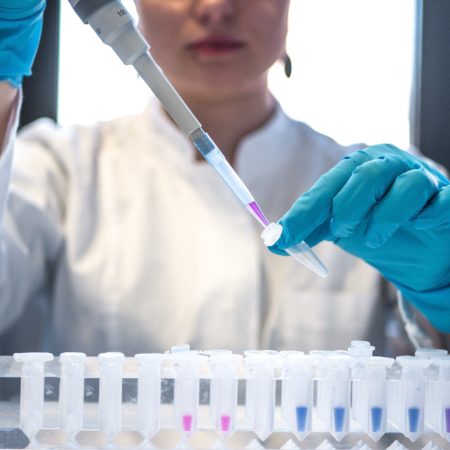Menu
Sample Required: Blood | Test Type: Nutrition
Key Advantages
Aberrant methionine metabolism can occur in anyone at any age and can be associated with numerous health consequences.
The Doctors Data Methylation profile evaluates the plasma levels of Methionine, Cysteine, SAMe, SAH, Hcys and Cystathionine, and provides the important “methylation index,” a ratio of SAMe to SAH. The test results can appropriately guide nutritional support to improve or normalise Methionine metabolism and ameliorate or prevent the potential adverse consequences associated with inadequate methylation and transsulfuration capacity.
This test might be useful for:

Methionine is first enzymatically converted to S-adenosylmethionine (SAM), the principal methyl donor for methylation of DNA, RNA, protein, phospholipids, creatinine and neurotransmitters. S-adenosylhomocysteine (SAH) is generated as a product of transmethylation and is hydrolyzed to homocysteine (Hcy) and adenosine through a reversible reaction.
SAH is a potent inhibitor of methylation reactions. Efficient removal of adenosine and Hcy is imperative to prevent accumulation of SAH. Hcy is normally removed or recycled by remethylation to methionine through a series of reactions that require 5-methyltetrahydrofolate and B12 or possibly betaine to complete the normal methylation cycle.
A low ratio of SAM to SAH is a sensitive indicator of under-methylation. Elevated plasma Hcy is an independent risk factor for cardiovascular disease (CVD). Research has shown that elevated SAH may be an even better predictor of risk for CVD.
The methionine transsulfuration pathway occurs primarily in the liver and diverts Hcys away from remethylation to methionine toward synthesis of the conditionally essential amino acid cysteine. Homocysteine in the presence of serine and B6 is enzymatically converted to cystathionine and ultimately cysteine. Cysteine is the rate-limiting amino acid in the biosynthesis of essential glutathione (GSH). GSH is pivotal in the regulation of intracellular redox homeostasis, oxidative stress, immune function, DNA synthesis and repair, apoptosis and detoxification of metals and chemicals.
Limited Oestrogen Detoxification
The 2-OH and 4-OH metabolites (catechol estrogens) are readily oxidized to quinones which are highly reactive. 2,4-hydroxy estrones can be significant mechanisms of estrogen quinone cell damage. This harmful pathway can be minimised through detoxification and excretion of the catechol estrogens by methyl groups donated by S-adenosylmethionine (SAMe). The inability to efficiently detoxify these estrogen metabolites has been linked to an increased susceptibility to postmenopausal estrogen sensitive cancers and overall prostate cancer risk
Neurotransmitter Imbalance
Methylation defects are associated with altered neurotransmitter metabolism. SAMe is an essential cofactor both for synthesis and metabolism of neurotransmitters. Normal SAMe levels may also be required for the maintenance of myelin (the fatty layer of insulation that surrounds each nerve).
Mitochondrial Dysfunction
Coenzyme Q10 (CoQ10) and carnitine are two cellular nutrients required in order to produce sufficient mitochondrial energy. CoQ10 is important for its role in ATP production in the mitochondrial respiratory chain while carnitine is involved in the transport of fatty acids into the mitochondrial matrix. Synthesis of both nutrients relies heavily upon the methyl donating capacity of SAMe. Compromised methionine metabolism may decrease levels of SAMe, thus resulting in impaired methylation and decreased cellular energy.
Cardiovascular Disease
Plasma homocysteine and S-adenosylhomocysteine (SAH) are positively associated with occlusive artery and cardiovascular disease and homocysteine has been historically considered to be an independent risk factor for cardiovascular disease. SAH is the immediate precursor of homocysteine, and although present in blood at less than 1/500th the concentration of homocysteine, recent research has suggested that SAH may be an even stronger indicator of vascular disease.
Type 2 Diabetes
A recent study showed that increased plasma concentrations of homocysteine and other methylation pathway intermediates are related to disturbed renal function in patients with type 2 diabetes. Additionally, patients with renal failure had a much lower methylation index SAMe/SAH ratio and elevated SAH.
Toxic Element Exposure
Epigenetics is the study of heritable changes in gene expression that occur without changes in DNA sequence. Epigenetic mechanisms are flexible genomic parameters that can change genome function under environmental influence. Toxic element exposure may contribute to epigenetic mechanisms which are known to affect enzymatic action required for proper methionine synthesis.
Mon – Fri 8am to 5.00pm NZT
orders@fxmed.co.nz
support@fxmed.co.nz
NZ customers
Free Phone: 0800 439 633
Free Fax: 0800 439 630
Australian customers
Free Phone: 1800 770 904
Free Fax: 1800 665 070

Please note that all products and services found on this website are available to patients through their health practitioner only.
New to FxMed? Set up your account and access leading brands trusted by practitioners in Australia and New Zealand.